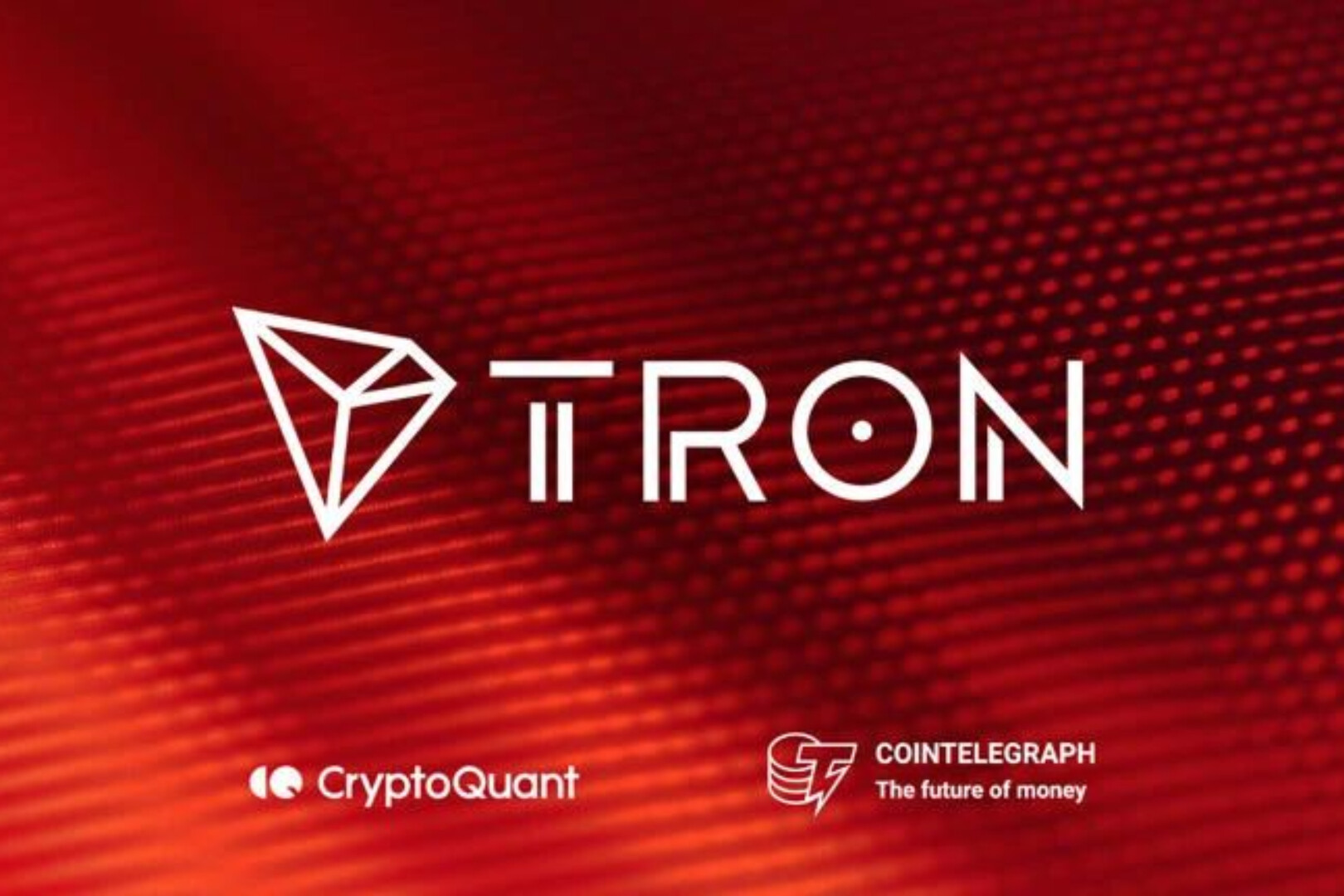

guide
The centralization of computing power obviously violates the original intention of BTC, and the security risks brought about by it are difficult to ignore. In addition to the problem of centralization of computing power, the huge resource consumption and efficiency problems caused by PoW mining have also made computing power mining suffer from criticism. In response to these problems, new consensus mechanisms have begun to emerge.
Summary
Summary
Special topic: At the beginning of BTC's birth, it was sought after by early enthusiasts due to its decentralized, open and non-tamperable characteristics. However, with the rapid development of the encryption industry, BTC has gained more and more recognition, and the computing power of the entire network has continued to grow. Centralization of computing power has become a hot topic in the crypto world. The centralization of computing power obviously violates the original intention of BTC, and the security risks brought about by it are difficult to ignore. In addition to the problem of centralization of computing power, the huge resource consumption and efficiency problems caused by PoW mining have also made computing power mining suffer from criticism. In response to these problems, new consensus mechanisms have begun to emerge. While these new consensus mechanisms solve some of the problems existing in the PoW consensus, they often introduce new problems, and the exploration of the consensus mechanism is far from over. Looking to the future, with the rapid development of blockchain technology, blockchain will receive more and more attention, and more people will invest in related research and development. In the future, there will be more efficient, safe, and Eco-friendly consensus mechanism.
Market: a slight rebound, more difficult to break through. The total market value of digital tokens this week was US$180.5 billion, an increase of US$7.7 billion or about 4.5% compared to last week. The average daily trading volume of the digital token market was 41.42 billion US dollars, a decrease of 25.2% from last week, and the average daily turnover rate was 23.4%, a decrease of 7.6% from last week. The current price of BTC is $5304, with a weekly increase of 4.2% and a monthly increase of 29.8%. The current price of ETH is $173.7, with a weekly increase of 5.4% and a monthly increase of 23.5%. This week, the BTC balance on the exchange was 794,000, a decrease of 2,993 from last week. The ETH balance on the exchange was 9.36 million, a decrease of 130,000 from last week. The amount of chips in the field decreased slightly.
Output and popularity: Computing power and attention have increased slightly. The mining difficulty of BTC this week is 6.393T, no significant change from last week. The daily average computing power this week is 45.80EH/s, a decrease of 0.33EH/s from last week; the mining difficulty of ETH this week is 1882, an increase of 3 from last week. The daily average computing power is 142.5TH/S, an increase of about 5.7TH/S.
Risk warning: regulatory policy risk, market trend risk, IEO risk
text
text
At the beginning of its birth, BTC was sought after by early enthusiasts due to its decentralization, openness, and non-tamperable characteristics. However, with the rapid development of the encryption industry, BTC has gained more and more recognition, and the computing power of the entire network has continued to grow. Centralization has become a hot topic in the crypto world. The centralization of computing power obviously violates the original intention of BTC, and the security risks brought about by it are difficult to ignore. In addition to the problem of centralization of computing power, the huge resource consumption and efficiency problems caused by PoW mining have also made computing power mining suffer from criticism. In response to these problems, new consensus mechanisms have begun to emerge.
1 Topic: Yesterday, Today and Tomorrow of the Consensus Mechanism
1.1 Towards centralized BTC mining
The beginning: CPU mining. On January 4, 2009, the excavation of the BTC creation block kicked off the prelude to digital token mining. For a long period of time at the beginning, BTC mining was mainly carried out through the CPU of ordinary PCs. As BTC gained more and more recognition, more and more people joined the ranks of mining, and the computing power of the entire network continued to rise. The difficulty of mining increases accordingly, and the competition for CPU mining becomes increasingly fierce.
Development: GPU mining and professional mining machines. In September 2010, the release of the first graphics card mining software announced that BTC mining has entered a new stage. The mining efficiency of a graphics card is equivalent to dozens of CPUs. The mining efficiency has been significantly improved, and the CPU has gradually withdrawn from BTC mining. The stage of mining. With the further development of graphics card mining, professional mining machines gradually appeared. In early 2013, Pumpkin Zhang developed the first ASIC mining machine. Since then, various ASIC mining machines have sprung up.

Endgame? Towards centralized BTC mining. With the continuous addition of new computing power, it is difficult for a single mining machine to mine BTC, and mining farms and mining pools have begun to appear. The mining pool breaks through the limitation of geographical location. Due to the larger proportion of computing power, the mining pool has a higher probability of mining BTC, and the income generated is distributed according to the proportion of miners' contribution to computing power. Therefore, the income of joining the mining pool is relatively stable. The income of large mining pools is more stable, so the computing power of the entire BTC network is increasingly concentrated. According to BTC.COM data, as of April 20, 2019, the computing power of the top five mining pools accounted for 66.5% of the total network computing power of BTC, and the top 15 The computing power of the large mining pool is as high as 99.52%.

The centralization of computing power obviously violates the original intention of BTC, and it also brings huge security risks to the encryption world. In addition to the problem of centralization of computing power, the huge resource consumption and efficiency problems caused by BTC mining have also made computing power mining criticized. In response to these problems, new mining models have begun to emerge.
1.2 Exploration of Consensus Mechanism Improvement
The Ethash algorithm adopted by ETH has been improved on the basis of proof of work. The Ethash algorithm adopts the same proof-of-work consensus mechanism as BTC. The difference is that the Ethash algorithm has the characteristics of resisting ASIC. By increasing the requirements for memory, mining needs to consume more memory space, so that the mining algorithm is controlled by the CPU. Intensive to I/O intensive, similar to the Scrypt algorithm used by LTC, DOGE, etc. Although the Ethash algorithm has optimized the proof of work, the centralization of computing power has not been greatly improved. According to etherscan.io data, as of April 20, 2019, the proportion of computing power of the top five mining pools of ETH has reached 79%, much higher than the proportion of computing power of the top five mining pools of BTC.
The PoS (Proof of Stake) consensus allocates accounting rights according to the proportion of certain rights and interests held by nodes to all nodes in the network. criticism. PoS tries to ensure that the security of the PoW consensus mechanism is not weaker than that of the PoW consensus mechanism without using a large amount of energy. Peercoin is the first digital token that incorporates the concept of PoS into the consensus mechanism. Peercoin adopts the hybrid consensus mechanism of PoS+PoW (Proof of Work). Peercoin puts forward the concept of "coin age". The token age is equal to the number of tokens multiplied by the time since the last transaction of this part of the token. The older the node's currency age, the higher the probability that the Hash value meets the conditions.
Although PoS has made improvements to address the shortcomings of PoW such as energy consumption, they still have limitations in block capacity and block generation speed. In order to solve these problems, Dan Larimer (BM) launched the BitShares project in 2013, adopting a consensus mechanism DPoS (Delegated Proof of Stake, Delegated Proof of Stake) that realizes most nodes participating in consensus through proxy voting. Similar to "the rich get richer" in the PoS consensus, nodes with more voting tokens usually have a greater right to speak, and can even manipulate voting results.
The PoC (Proof of Capacity) consensus adopts a hard disk-based mining model. Burst first proposed the PoC consensus in 2014. Compared with the proof of work, the power consumption and mining threshold of PoC are relatively lower. BitcoinHD further improved PoC to CPoC Conditioned-Proof of Capacity, conditional proof of capacity), that is, conditional proof of capacity, and miners mine by mortgaging tokens.
Above we have only listed some consensus mechanisms or other new alternatives that have improved the PoW consensus. In fact, the current consensus algorithms on the market are far more than the above categories, including pBFT consensus and DAG consensus. While these new consensus mechanisms solve some of the problems existing in the PoW consensus, they often introduce new problems, and the exploration of the consensus mechanism is far from over.
Looking to the future, with the rapid development of blockchain technology, blockchain will receive more and more attention, and more people will invest in related research and development. In the future, there will be more efficient, safe, and Eco-friendly consensus mechanism.
At present, although BTC’s proof-of-work mechanism has been criticized due to the centralization of computing power and huge energy consumption, BTC’s status as a value store is still unshakable by other tokens.
2 Market: Slight rebound, more difficult to break through
2.1 The overall market: shock upward
The total market value of digital tokens this week was US$180.5 billion, an increase of US$7.7 billion or about 4.5% compared to last week. The market rebounded this week after a slight dip last week.


The average daily trading volume of the digital token market was 41.42 billion US dollars, a decrease of 25.2% from last week, and the average daily turnover rate was 23.4%, a decrease of 7.6% from last week.


This week, the BTC balance on the exchange was 794,000, a decrease of 2,993 from last week. The ETH balance on the exchange was 9.36 million, a decrease of 130,000 from last week. The amount of chips in the field decreased slightly.


The USDT market cap is $2.58 billion, an increase of $157 million from last week. The demand for stable tokens from over-the-counter funds is still increasing, and the USDT premium has not changed significantly.
2.2 Core Token: Slight rebound, difficult to break through

The current price of BTC is $5304, with a weekly increase of 4.2% and a monthly increase of 29.8%. This week, the average daily trading volume of BTC was 12.1 billion US dollars, and the average daily turnover rate was 13.2%. The price of BTC rebounded slightly this week, and the transaction was significantly lower than last week, and the breakthrough was weak.

The current price of ETH is $173.7, with a weekly increase of 5.4% and a monthly increase of 23.5%. The average daily trading volume of ETH this week was US$5.68 billion, and the average daily turnover rate was 31.9%, a significant drop from last week. ETH is linked to BTC as a whole.

The current price of EOS is $5.49, with a weekly increase of 2.1% and a monthly decrease of 46.6%. This week, the average daily trading volume of EOS was 2.03 billion US dollars, and the average daily turnover rate was 41.0%. The change of hands is relatively sufficient, but it is significantly lower than last week. The increase in the previous period is relatively large, and the increase this week is lower than that of mainstream tokens.

The current price of BCH is 306.8 US dollars, with a weekly increase of 8.5% and a monthly increase of 91.1%. This week, the average daily trading volume of BCH was 1.46 billion US dollars, and the average daily turnover rate was 27.0%. Affected by the Satoshi Auben incident, BCH performed better than mainstream tokens this week.

This week, the monthly volatility of major tokens continued to fall. The monthly volatility of BTC was 11.1%, down 1.5% from last week; the monthly volatility of ETH was 30.0%, down 3.0% from last week; the monthly volatility of EOS was 28.1%, A decrease of 7.1% from last week; the monthly volatility of BCH is 45.8%, a decrease of 0.1% from last week. The overall volatility of the market fell slightly.
2.3 Market view: It is difficult to sustain the upward trend
Mainstream tokens rebounded slightly. Following the callback last week, mainstream tokens have rebounded to varying degrees this week. Affected by the exchange’s delisting of BSV, BCH performed well, and the BSV market fluctuated sharply. In the short term, it is necessary to pay attention to the further risks of the incident.
IEO risks are gradually accumulating. The popularity of IEO is on the decline. The number of participants in the second phase of Huobi Prime project has dropped significantly compared to the first phase. Combined with the previous IEO breakout situation of small exchanges, investors should pay attention to the risks of IEO projects and platform tokens.
It is more difficult to break through, and there may be a callback in the short term. The upward breakthrough of mainstream tokens has not been verified by transactions, and there is a lot of pressure on the upper side, making it difficult to continue to break through in the short term. With the completion of the short-term consolidation and the subsidence of the IEO enthusiasm, after the funds flow back to the mainstream tokens, a new round of rising market may start.
3 Output and popularity: computing power and attention increased slightly


The computing power of BTC and ETH increased slightly, and the difficulty of mining did not change significantly. The mining difficulty of BTC this week is 6.393T, no significant change from last week. The daily average computing power this week is 45.80EH/s, a decrease of 0.33EH/s from last week; the mining difficulty of ETH this week is 1882, an increase of 3 from last week. The daily average computing power is 142.5TH/S, an increase of about 5.7TH/S.


This week, according to GoogleTrends, the search popularity of the term Bitcoin is 9, and the search popularity of Ethereum is 6, indicating that the public's interest in encrypted tokens has increased.
4Industry news: New French law allows life insurance companies to offer encrypted investments
4.1 New law in France allows life insurance companies to offer crypto investments
According to FXStreet reports, the French government passed the Pacte law in the National Assembly on April 11, and French life insurance companies will be allowed to provide encrypted tokens as a legal form of investment.
4.2 Many exchanges and wallet service providers will terminate their support for BSV
According to the official announcement of Binance, Binance will stop trading and delist BSV at 18:00 on April 22, 2019. In addition, Kraken, Blockchain.com, Shapeshift, etc. will also terminate their support for BSV.
4.3 The U.S. Department of the Treasury fined unregistered BTC P2P traders for the first time
According to the Wall Street Journal, the U.S. Department of the Treasury’s Financial Crimes Unit (FinCEN) recently fined a California man accused of violating anti-money laundering laws in the amount of $35,000 because he traded data on behalf of clients without a license. Hundreds of BTC. FinCEN said on Thursday that this is the first time the department has taken enforcement actions against P2P transactions of digital tokens.
4.4 The Ministry of Industry and Information Technology's list of pilot demonstration projects for network security technology applications includes 6 blockchain projects
According to the official website of the Ministry of Industry and Information Technology, on April 18, the Cyber Security Administration of the Ministry of Industry and Information Technology released a list of pilot demonstration projects for network security technology applications. The public list has a total of 101 pilot demonstration projects, including 6 blockchain projects, namely the trusted blockchain public service platform for electric power "Internet +" business, the electronic invoice system based on blockchain, and the SM series password-based The research and demonstration application of the underlying platform of the alliance blockchain, the third-party electronic data security platform based on the alliance blockchain, the trusted transmission platform of government affairs information of the government alliance blockchain, and the security risk monitoring platform for the blockchain industry.
4.5 The country's first blockchain technology application practice base settled in Qingdao







